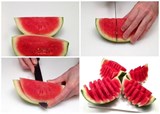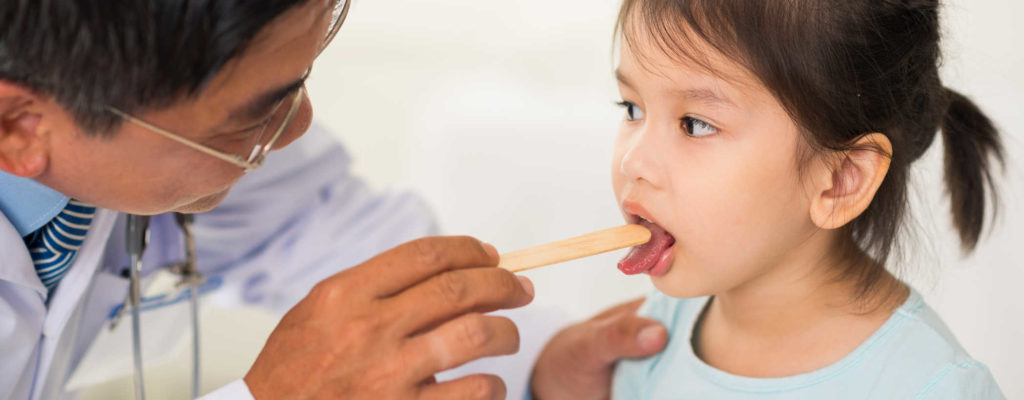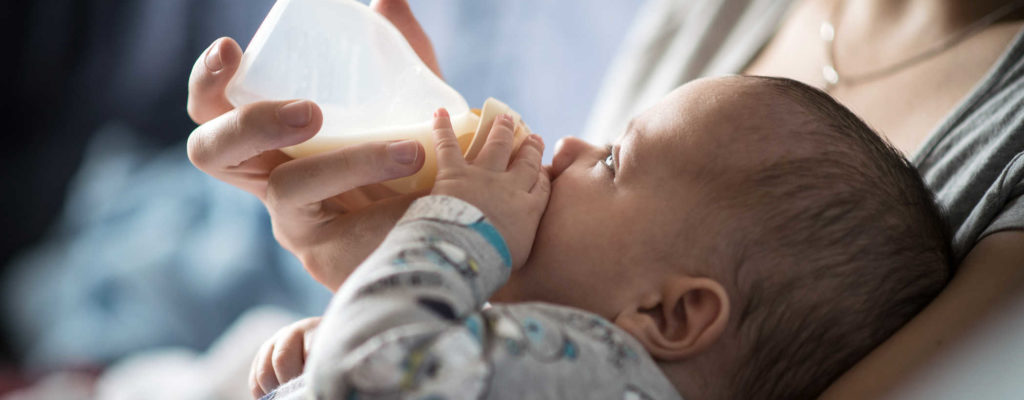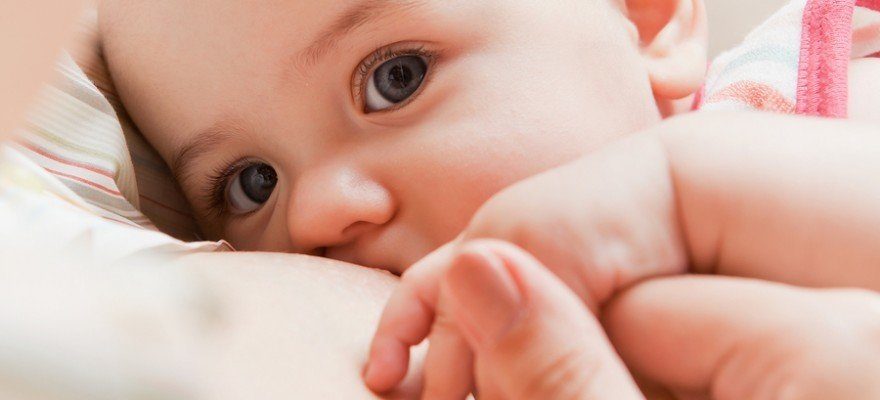Complete template of the whole vascular system in the body
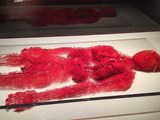
After a series of medical measures they obtained a complete human vascular system profile.
Fever is a very common symptom in babies and young children. But sometimes a high fever makes you worry, confused and don't know what to do when the baby has a high fever. Learn ways to reduce fever at home to help your baby's fever go away.
You may be interested in: What are the symptoms of dengue fever in children that parents should be aware of
There are many causes of fever, such as: newly vaccinated children, teething, weather changes, infections, viral infections, food poisoning ... Here are important information about fever and quick ways to reduce fever for children at home to help them recover quickly.
Your baby may have a fever due to one of the following reasons:
Infection: Most children who get a fever are due to an infection or an infection. Fever is the body's way of fighting an infection by stimulating its natural defense mechanisms.
Immunization: Infants and young children occasionally have a low fever after vaccination, you can find ways to reduce the fever during the vaccination here .
Wearing too much clothes, keeping the baby too well: Young children, especially babies, are very susceptible to fever if they are kept too tightly closed or in a hot environment because they cannot regulate their own temperature.
Teething: Teething can also increase body temperature, but only slightly. If your baby's temperature is higher than 38oC, the baby's fever is likely not due to teething.
Some other diseases: Fever can be one of the signs of dangerous diseases such as pneumonia , malaria, dengue fever, meningitis, septicemia , ... Children often have high fever and are very tired. other symptoms such as: chills, bleeding, convulsions, vomiting, difficulty breathing, cyanosis, lethargy, struggling or lethargy. These conditions can be life-threatening if not detected and managed in time.
When your baby has the following symptoms, chances are he has a fever:
Baby's body temperature is higher than 37.5oC
Sweat
Children fussy or cry easily
Tired
Lethargy
Rapidly breath
Quit drinking, drinking water, anorexia
Sleep well.
When your baby has the above symptoms, you need to quickly measure the child's temperature to have a timely response.
Usually a child is said to have a fever if his or her body temperature is above 37.5 ° C. When a fever, the child's body temperature drops in the morning and higher at night. At night, when the child's body temperature starts to rise it can cause a baby to shiver. This makes your baby unable to sleep well, making you even more nervous.
When your child has a fever, you can use quick fever reductions for your child at home and monitor the child's health before taking him or her to the hospital. Because some fevers can be cured if you take care of your baby properly. If parents still wonder what to do when the child has a fever? Refer to 8 simple but effective ways to reduce fever for children at aFamilyToday Health:

Fever can easily lead to dehydration, try to encourage your baby to consume more fluids such as juice, soup, porridge, water, herbal tea (artichoke, chamomile tea ...), milk ... In addition, parents can also give the baby oral rehydration and electrolyte preparations such as oresol, hydrite. This is to rehydrate, purify the body to help the baby quickly reduce fever.
The way to reduce fever for babies who are too young and who are breastfeeding is that mothers should breastfeed more often and more often. With your baby already weaned, you should learn how to prepare delicious snacks so that your child can eat well and heal quickly.
Children have a fever but still play flexibly, eat well, drink enough fluids and especially they have normal bowel movements, you don't need to give them medicine. A quick way to reduce fever at home in this case is to put the child in loose clothing so that the body can radiate heat to help the child reduce the fever.
In addition, you can give your child a fever reducing patch to help ease the discomfort.
Another simple way to reduce a child's fever is to cool your baby with warm, step by step water. First, take off all the baby's clothes, use 5 small towels dipped in warm water, squeeze it out slightly, then put the child's armpits and crotch, the other towel soaked in warm water to wipe over the child. Warm water will evaporate, dilating blood vessels to help cool the body. Continue to do this until the child's temperature drops to normal (37oC). Usually, the temperature will drop in about 30-45 minutes.
Children from 6 months to 5 years old when the fever is too high can lead to seizures, you need to actively reduce the fever for your child.
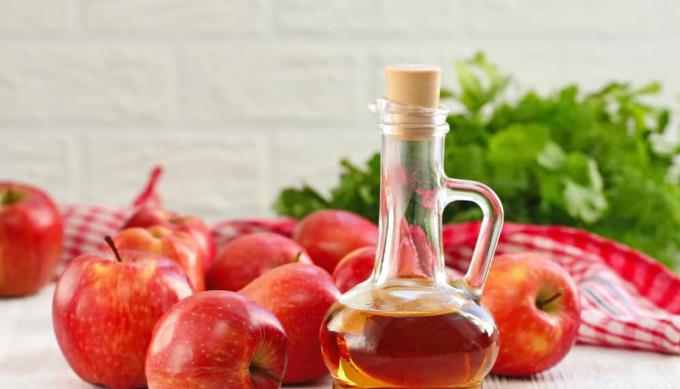
Wiping your body with apple cider vinegar is an effective way to reduce fevers for young children at home, but is less widely available. When the baby's body temperature rises, you can soak a towel in apple cider vinegar diluted with water in a 1: 2 ratio and then apply it on the baby's forehead and abdomen. Alternatively, you can use a towel to soak the apple cider vinegar and wrap it around the soles of the child's feet.
Orange juice and fruit juices rich in vitamin C such as grapefruit, tangerine ... are good drinks that help babies increase their resistance to being able to fight against external pathogens. In addition, chilled fruits such as grapes, watermelon, dragon fruit ... also provide water to help soothe the body.
Learn more about food sources rich in vitamin C to easily plan a nutrient-rich daily menu, helping your baby reduce fever quickly.
Some experts believe that calcium can help reduce the time children are sick. This mineral is best absorbed from food or can be supplemented with specialized medicine.
You should add calcium to your baby through the daily diet by feeding your baby dishes with ingredients from fish, dark green vegetables, oats ... to help your baby get well soon.
A fairly effective way to reduce fever, but few people know it is to use massage essential oils. This is a great natural fever reducer by lowering body temperature. The rubefacients found in peppermint, ginger and cinnamon bark are able to warm the circulatory system and cause sweating. This partly helps the body to reduce heat.
You can also use eucalyptus, peppermint, and chamomile essential oils to reduce fever. Mix 6 drops of oil in 1 teaspoon of carrier oil, use that solution to massage the child's body, paying special attention to special areas such as the back of the neck and heels.
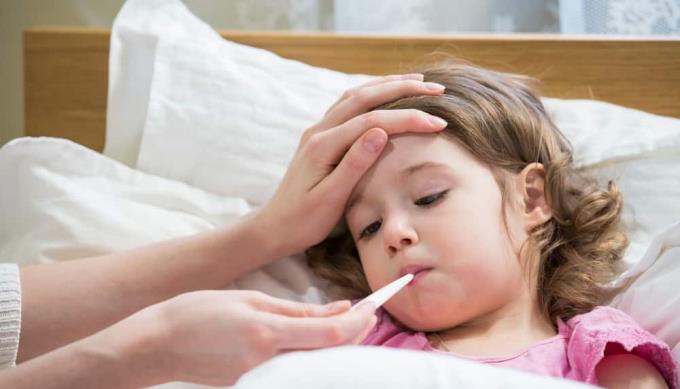
You should give fever-reducing medicine to your child when he / she has a fever of 38oC. Single paracetamol in sachet form or syrup is an easy-to-use, fast-reducing fever-reducing drug, usually having antipyretic effects after 30 minutes of use and lasts 4-6 hours with few side effects. You need to give the child the correct dose as directed as 10 - 15mg / kg body weight / time, repeat after 4 hours if fever still persists. You should give your child 3-4 times / day, the maximum total dose should not exceed 60mg / kg body-weight / day.
Acetaminophen can also help reduce fever. Note that the dosage for infants and children depends on weight and age. Also, you should consult with your pediatrician before giving any medicine to your baby. Carefully read the instructions on the package of medications and use specialized measuring equipment to ensure the correct amount of medicine your child is taking.
In addition to applying ways to reduce fever for children as suggested, you should refer to the following tips to help your baby recover quickly:
Do not warm, let your child wear layers of clothes when the child has a fever. If your child has a fever and shivering, you should only wear loose clothing, thin blankets to help her body radiate heat.
Children should not be in too tight, cramped rooms.
Do not use cold towels, ice, alcohol or alcohol to reduce fever in children.
Do not give medicine to children as soon as they have a fever. The rush to give the child fever-reducing medicine as soon as the baby has a fever inadvertently makes the defense mechanism of the child's body not have a chance to "face" with the pathogens, remember it to form a defense mechanism. . If your child has a fever below 38oC, you only need to apply home remedies and close monitoring for 1-2 days.
If after 1-2 days, your baby's fever does not decrease, take him to the hospital to be examined and diagnosed.
Do not squeeze lemon into the baby's mouth and eyes to reduce fever. This can cause the baby to experience cold sore, tongue, eyes burning or suffocation.
If your child has a fever with a seizure, don't pry open the baby with a hard object or try to forcefully hold the baby. Have your baby lie on his side and monitor him closely, paying attention to how long each seizure lasts to provide information to the doctor when needed.
Do not use folk remedies to reduce fever in children. Because these remedies have not been medically proven, their side effects have not been evaluated.
Absolutely do not use aspirin to reduce a child's fever because it can cause brain damage ( Reye syndrome ).
For babies and young children, you should take your baby to the hospital as soon as:
Infants 0-3 months with fever of 38oC or above.
Children 3 - 5 months old, fever up to 38 ° C or higher:
Children older than 6 months, fever about 39 ° C or higher.
Also, no matter what age your child is, if you notice that your child has any unusual signs or symptoms of a serious infection such as difficulty breathing or purple spots on the skin, take your child to the hospital immediately. ie.
After a series of medical measures they obtained a complete human vascular system profile.
Watermelon is one of the fruits that many people love, not only cheap but also delicious, nutritious and refreshing in the summer. To get delicious watermelon pieces, show off your housewives, your artistic talents to cut beautiful pieces of watermelon.
The dog is an animal that is close to humans, it is also the first animal that humans were purebred, about 15,000 years ago at the end of the Ice Age.
aFamilyToday Health - The digestive system and body in each baby is different. Parents need to recognize notes to deal with when babies have a food allergy!
Babies need many factors for perfect development. aFamilyToday Health shares with parents things to keep in mind when babies are 8 weeks old so that parents can take care of their babies the best!
Babies need many factors for perfect development. aFamilyToday Health shares with parents things to keep in mind when babies are 18 weeks so that parents can take care of their babies the best!
Babies need many factors for perfect development. aFamilyToday Health shares with parents things to keep in mind when babies are 28 weeks old so that parents can take care of their babies the best!
Babies need many factors for perfect development. aFamilyToday Health shares with parents things to keep in mind when babies are 32 weeks old so that parents can take care of their babies the best!
aFamilyToday Health provides basic knowledge about 3 popular formula milk types, helping you to choose the right milk for your baby's needs.
In addition to giving babies the opportunity to enjoy valuable nutrition, what other interesting benefits can breastfeeding mothers enjoy?
